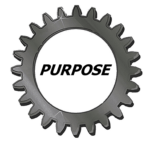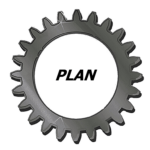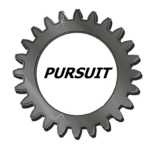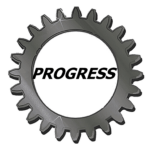Process Sheet
Process sheet helps to understand the impact of various factors on the process to devise strategies to mitigate risks and enhance performance.

Chapter 1: What is it?

The macro level process sheet or turtle diagram is a powerful tool used in various industries to visually represent the relationship between processes, inputs, outputs, and factors that influence an organization’s performance. It helps organizations understand and evaluate the effectiveness of their processes and identify areas for improvement.
The diagram consists of three main components: the process, the inputs, and the outputs. The process represents the activities or steps that transform inputs into desired outputs. Inputs are the resources, information, or materials required for the process, while outputs are the results or products produced by the process.
Chapter 2 : When do I use it?

The process sheet is a visual representation of the organization’s key processes, risks, and controls. It provides a holistic view of the entire organization and its interdependencies, allowing leaders to identify areas of improvement and potential opportunities for growth. This process sheet helps unlock the key to success by providing a clear and comprehensive understanding of the organization’s strategic objectives and how they can be achieved.
By mapping out the organization’s processes and identifying potential risks and controls, the process sheet enables leaders to make informed decisions and allocate resources effectively. It helps them understand the impact of various factors on the organization’s success and devise strategies to mitigate risks and enhance performance. With this powerful tool, organizations can align their operations with their strategic goals and unlock the key to success.
Chapter 3: How do I use it?

To master the Process Sheet, follow these step-by-step guidelines:
1. Identify the scope: Determine the boundaries of the process you want to analyze and improve. Clearly define the purpose and objectives of the process.
2. Map the process flow: Begin listing the activities of the process, representing the process steps. List the activities in sequence from starting to ending.
3. Identify inputs and outputs: Identify the key inputs and outputs of the process. Clearly label and describe each input and output.
4. Add controls: Identify the controls that govern the process, such as regulations or quality standards.
5. Analyze and improve: Once the process sheet is complete, analyze the process and identify areas for improvement. This may involve brainstorming, root cause analysis, or other problem-solving techniques. Implement effective solutions to enhance the process.
To succeed in mastering the Macro Turtle Diagram, consider the following tips and tricks:
1. Keep it simple: Avoid overcomplicating the diagram with unnecessary details. Focus on the essential elements of the process.
2. Involve stakeholders: Engage relevant stakeholders in the process of creating the process sheet. Their input and insights can provide valuable perspectives.
3. Regularly review and update: Processes are dynamic, so it’s important to regularly review and update the process sheet to ensure it accurately reflects the current state. This will help maintain its effectiveness.
4. Use color and visuals: Incorporate color and visuals to enhance the clarity and visual appeal of the process sheet. This can make it more engaging and easier to understand.
Chapter 4 :Why should I use it?

The process sheet is an invaluable tool in process improvement, providing organizations with a visual representation that aids in analyzing and enhancing processes. By mastering the process sheet, teams can improve collaboration, streamline processes, and achieve better outcomes. With the step-by-step guide and tips provided in this course, you have the tools to become proficient in using this powerful tool. So, start applying this practical guide, and witness the positive impact it can have on your organization’s efficiency and success!
Chapter 5 : Coaching Benefits
![]()
I need help…
Not all help costs money. Requests for additional information and potential application for your industry, helps us to improve the training experience, at no charge to you.
When do I need coaching services?
Coaching has proven time and time again to be a powerful tool in optimizing performance and driving efficiency in various aspects of life. Whether it is in the workplace, educational settings, or even within personal relationships, coaching has the ability to unlock untapped potential and enhance productivity. By leveraging the collective intelligence and diverse skills of a group, individuals can capitalize on their strengths, overcome challenges, and achieve remarkable results.
What do I get with coaching services?
Our Role – Quality coordinating – Work to understand your system, review your needs, and suggest process improvements.
We help you use a chosen template and apply it to your business model, with or without action plans.
Coaching includes personalized shareable document for use or for future coaching.
1 hour online coaching (one on one coaching) no minimum participates

Download a Process Sheet Template
Templates are like a secret weapon in the arsenal of content creators. They provide a foundation, a starting point that saves us time and energy.
Mobile Format
By using Google Docs we offer an extensive selection of free templates, covering various categories with no special apps to download making them truly mobile. These templates are also available in Microsoft Word format. These templates are designed by professionals, ensuring a polished and visually appealing outcome. With a few clicks, we can have a well-structured document, complete with headings, subheadings, and placeholders for our content. These templates act as a guiding hand, making it easier for us to organize our thoughts and ideas effectively. They eliminate the need to spend hours formatting and styling our documents, enabling us to focus on the content creation itself.
Simplify Creation Content
The true power of templates lies in their ability to simplify and streamline the content creation process. By using pre-designed layouts and formats, we can save valuable time and effort. Rather than starting from a blank canvas and grappling with design decisions, we can simply choose a template that aligns with our desired style and purpose. This not only speeds up the creation process but also ensures a consistent and professional look for our content.
Templates also allow for customization, enabling us to personalize the document according to our needs. This level of flexibility empowers us to create visually stunning content without the need for advanced design skills. Templates break down the barriers between creativity and execution, making content creation accessible to all.
Unleash Your Creativity
Effortless content creation is within our reach, thanks to the power of free templates in Google Docs and Microsoft Word. By utilizing these templates, we can simplify our workflows, save time, and produce high-quality content without the need for extensive design knowledge. Unlocking the potential of templates allows us to focus on what truly matters – our ideas, thoughts, and messages. So why start from scratch when we have a vast library of templates waiting to be explored? Embrace the convenience and unleash your creativity by utilizing the power of free templates in your next content creation endeavor.
What is a Process Sheet?
Watch this Video.
A process sheet is a crucial tool utilized in various industries to outline the steps required to complete a specific task or process. It serves as a comprehensive guide that provides a clear and organized structure for workers to follow.
As You Watch This Video
As you watch this video to understand the available template;
1. We have to answer the questions: what does the process do? This answer starts with the support function to the value proposition (see Purpose Defining Course – Value Proposition Model), and further identified on the organizations macro level process map (see Strategic Planning Creation Course – Process Map)
2. Inputs – which are one or more suppliers, whether internal or external, identified as an required input whether the need is tangible or intangible.
3. Outputs – which are one or more customers or receivers of that output, whether internal or external, identified as a required output whether the need is tangible or intangible.
4. How do we operate our process? These are the activities conducted to transform inputs into outputs.
a) Once you identify the needed activities, determine what type of talent, whether it is internal or external, is needed with the required education, skills and competencies to complete these identified activities.
b) Once you have identified the activities and talent needed, you can assess the resources needed to support these activities and talents. The resources can be special materials, special equipment and tooling, special software or special services to aid into completing identified activities.
5. How much? The receiver of the process’s output generally determines the output requirements. The requirement can define what monitoring and measuring activities and/or data collection needs to determine if the process is functioning effectively and efficiently.
Still need to visualize, understand the design of the process sheet and how the method is tested, see the following case studies.

Case Study 1 - Led to Manage LLC
Macro Level View
How we used this format
1. We started with multidisciplinary team, a process map of the organization (see Strategic Planning Creation Course – Process Map) and a defined organizational structure (see Strategic Planning Creation Course – Organizational Chart) to determine the process owner responsible for the needed process sheet.
2. We started with the customer requirements defined to know what output and specifications are required, then asked the internal receiver of this process as defined in the process map, what internal requirement are need from this process.
3. Next we determined what activities are need from this process to fulfill these internal and external needs and expectations.
4. Now at this point the process has needs to complete its mission. So first, ask what do we need from external customers in the form of additional requirements and specifications, from external partners whether tangible and intangible goods and services and internal suppliers of internal tangible and intangible good and services.
5. To summarize so far we identified the customer’s needs and expectations, the process needs and expectations from the supplier of goods ad services and the process activities needed to transform inputs into outputs. Next we looked at the need special resources like physical, electronic, services and human.
6. Special resources included needed materials, equipment and tooling as well as need support resources like software and services like utilities, facilities, and support personnel.
7. Once we identified the need for talent to operate the process, we asses if that talent needed to have a certain proficiencies as far as education, skills and competencies.
8. Now we have the process mapped out, we looked again at the output requirement and the activities, and resources to be applied and defined the monitoring ad measurement activities need to identify if the process is operating effectively and efficiently.
Lessons learned
In the development of our process map, it helped us to identify:
1. By using a multidisciplinary team, which could include external partners, this strategic planning team started to understand it’s own roles and responsibilities toward the process being examined.
2. The multifunctional team then conducted a brainstorming session to affinity categories (see at the end of each course package – Brainstorming / Affinity Diagram) facing the process and determine what need actions had to be addressed before deploying this process into the organization.
3. After a discussion with the multidisciplinary team , we understood the short-term and long-term goals needed to implement this process and conducted a force field analysis (see at the end of each course package – Force Field Analysis) to determine how to strengthen the driving forces for this change and address the restraining forces against it.
4. Finally we reviewed the time to delivery model (see Purpose Defining Course – Time To Delivery Model), to determine if we can meet the estimated delivery model of change it to reflect the current delivery status.